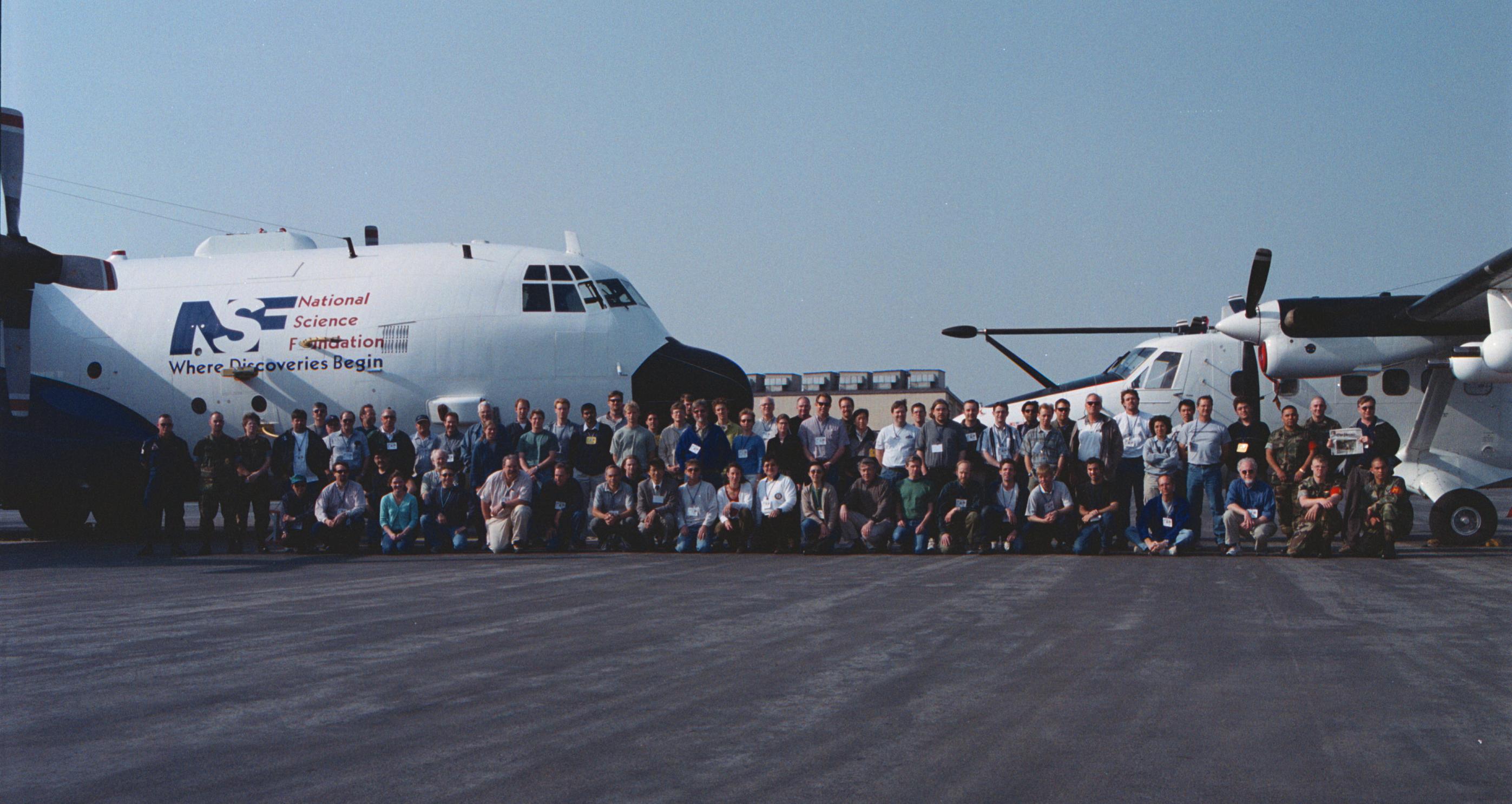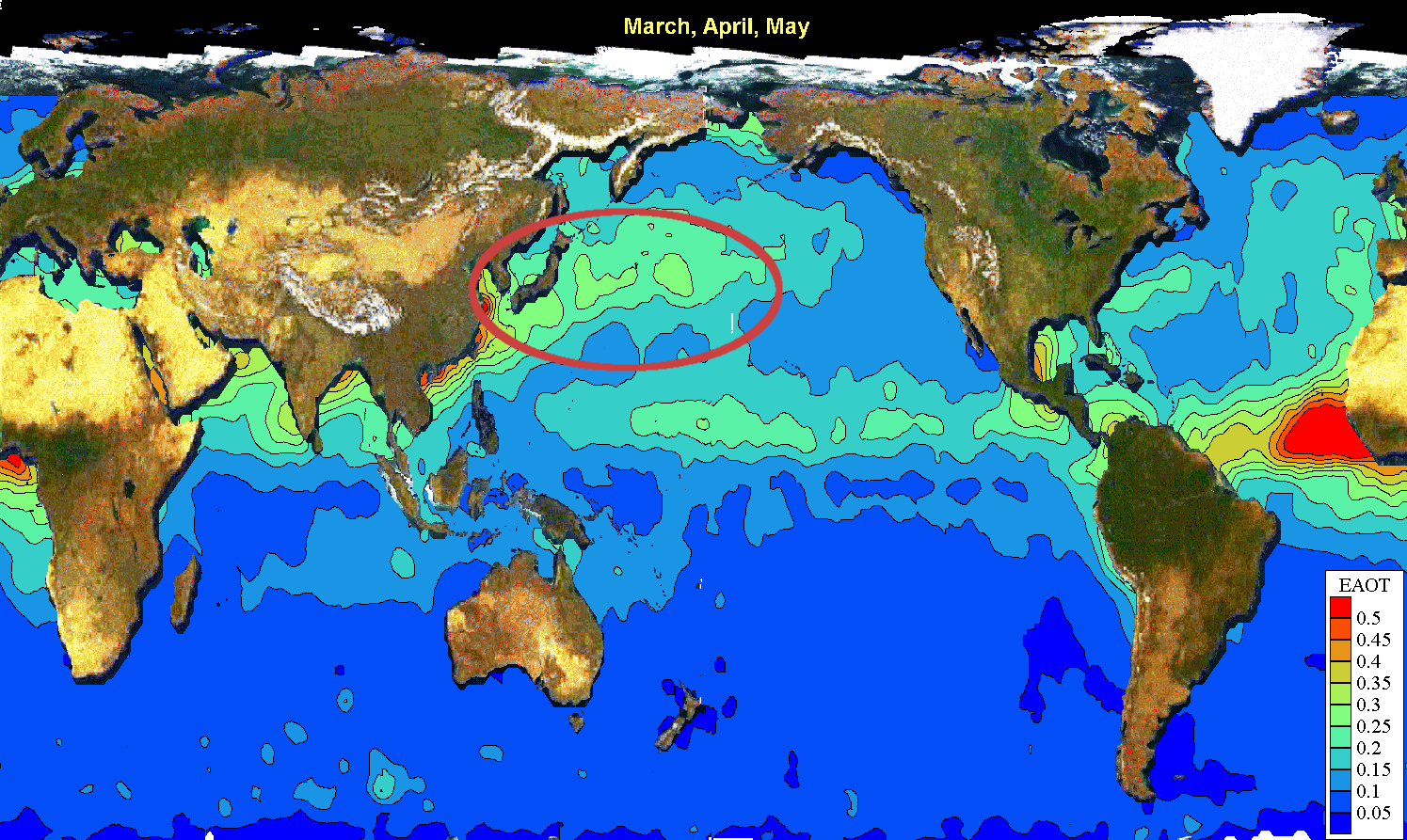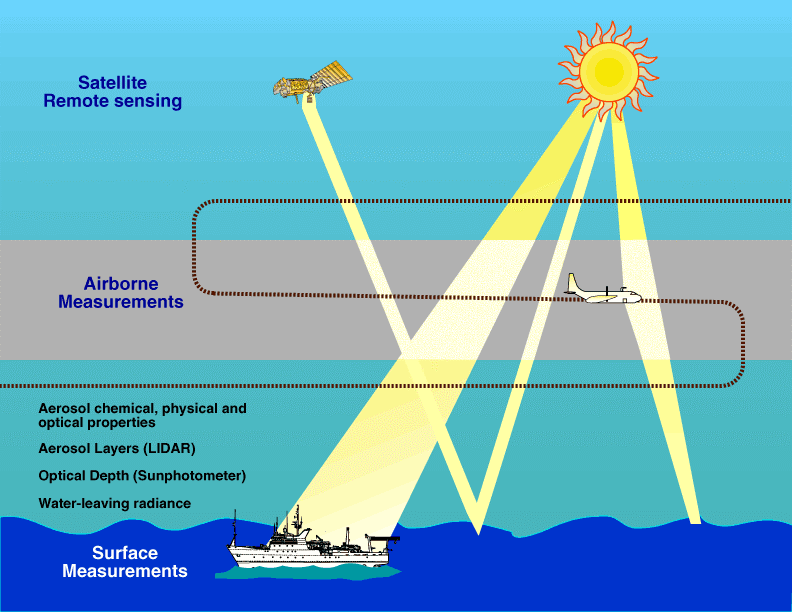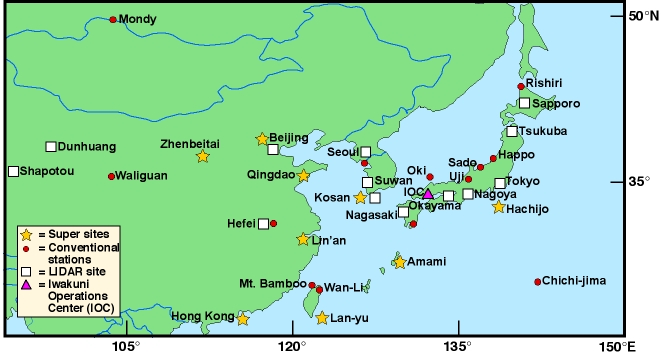ACE-ASIA
Asian Pacific Regional Aerosol Characterization Experiment
The Aerosol Characterization Experiments were a series of experiments planned by the International Global Atmospheric Chemistry Program (IGAC) to integrate in-situ measurements, satellite observations, and models to reduce the uncertainty in calculations of the climate forcing due to aerosol particles.
The fourth of these experiments, ACE-Asia, took place from 30 March to 3 May 2001 in the Asia/Pacific region. In this region the aerosol loadings have been seriously perturbed by anthropogenic activities and these perturbations are increacing rapidly with time. The studies of aerosol-climate interactions in eastern Asia and the northwestern Pacific complimented and extended the earlier ACE experiments, in large measure due to the unique characteristics of the emissions from Asia.
(Click Image for Full Resolution)
Scientific Objectives
The goals of ACE-Asia were to determine and understand the properties and controlling factors of the aerosol in the anthropogenically modified atmosphere of Eastern Asia and the Northwest Pacific and to assess their relevance for radiative forcing of climate. To achieve these goals, ACE-Asia defined three specific objectives:
- Objective 1. Determine the physical, chemical, and radiative properties of the major aerosol types in the Eastern Asia and Northwest Pacific region and investigate the relationships among these properties.
Objective 2. Quantify the interactions between aerosols and radiation in the Eastern Asia and Northwest Pacific region
Objective 3. Quantify the physical and chemical processes controlling the evolution of the major aerosol types and in particular of their physical, chemical, and radiative properties.
(Click Image for Full Resolution)
Instrumentation
ACE-Asia utilized several aircraft, ships and a network of land stations to accomplish the goals of the project.
The NSF/NCAR C-130 conducted 19 research and 6 ferry flights from the Iwakuni Marine Corps Air Station (MCAS) and was equipped with a wide assortment of instrumentation including measurements of aerosol chemical/physical/optical properties, radiation, meteorology and trace gases. Its operations included flights near Gosan, over the Yellow Sea, and throughout the Sea of Japan.
The CIRPAS Twin Otter conducted 19 research flights from the Iwakuni MACS. The primary objective of the Twin Otter was to survey the air leaving Eastern Asia to characterize aerosol physical, chemical, and optical properties and their variation with time and space, emphasizing variations with altitude and distance from the continent with a suite of instrumentation.
The ARA King Air conducted 12 flights from a base at the Kagoshima Airport (there were also 15 ferry flights) and was focused on the impact of aerosols on clouds and was equipped with a package optimized for cloud physics with a few aerosol measurements. Most of its operations were over the East China Sea between Kyushu and Amami Ohshima.
The Japanese R/V Hakuho-Maru and R/V Mirai as well as the NOAA R/V Ron Brown conducted several cruises over the ocean to the south of the Japanese mainland. R/V Hakuho-Maru sailed from 20 June to 27 July 2000; R/V Mirai had three cruises 9 May to 10 June 2000, 13 June to 6 July 2000, and 14-28 May 2001; and R/V Ron Brown from 14 March to 20 April 2001. Each R/V had an assortment of aerosol chemical, physical, and optical measurements as well as radiation and meteorology instrumentation (click on the cruise dates for information).
ACE-Asia also utilized a network of ground stations to quantify the chemical, physical, and radiative properties of aerosols in the study area and assess their spatial and temporal (seasonal and inter-annual) variability. The network was composed of basic and enhanced stations that operated in routine and intensive modes. The basic stations were outfitted with a standard aerosol sampler. The enhanced stations were in four subnetworks and were equipped with comparable sets of instruments to investigate (1) multiphase chemistry, (2) aerosol optics, (3) aerosol deposition, and (4) vertical structure of the atmosphere.
(Click Image for Full Resolution)
What Was Learned from ACE-Asia
Among the scientific findings from ACE-Asia are the following:
- Air pollution changes dust aerosols in many ways, adding black carbon, toxic materials, and acidic gases to the mineral particles. These change its impact on health, climate, and the delivery of nutrient iron to the remote Pacific ocean. Thus we have to think of atmospheric chemistry and its impact on air quality and climate change as global issues.
- The dust that goes from East Asia to the Pacific does not absorb nearly as much light as the dark aerosol from South Asia or some previous Saharan dust data. There are dramatic regional differences in the optical properties of aerosols. This means that we can not measure dust in one region and assume that dust everywhere around the globe will have the same impacts on climate.
- Combining ACE-Asia suborbital and satellite measurements yields monthly average (April 2001), cloud-free aerosol radiative forcing at the surface in ACE-Asia exceeding -30 W m-2 in a plume downwind of Japan and in the Yellow Sea, East China Sea, and Sea of Japan. This is higher than the top of atmosphere warming by greenhouse gases and the climatic impact of this cooling is still being assessed.
Further information on ACE-Asia is available in the overview article published in the ACE-Asia special issue of the Journal of Geophysical Research.
All photos copyright University Corporation for Atmospheric Research unless otherwise noted.








